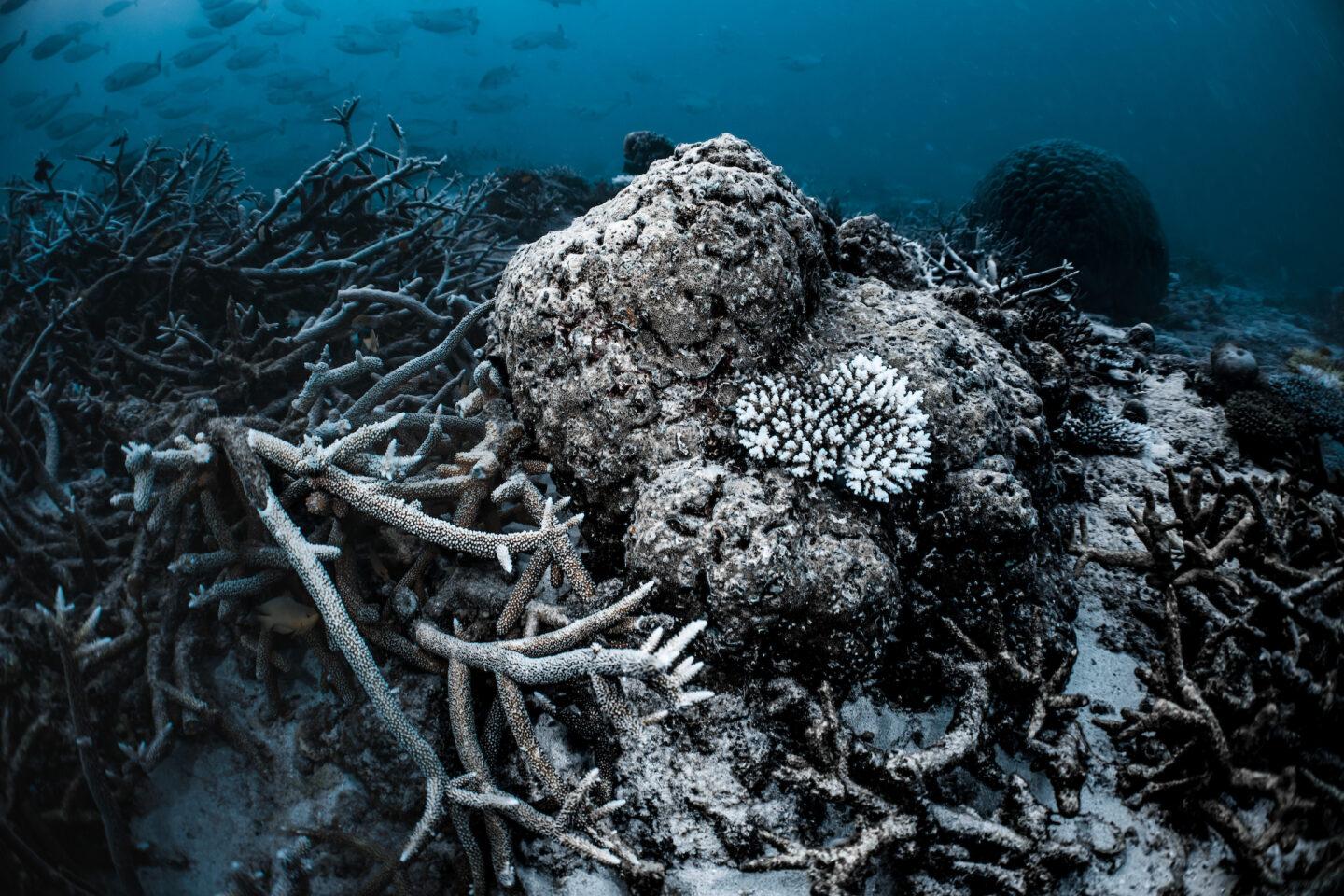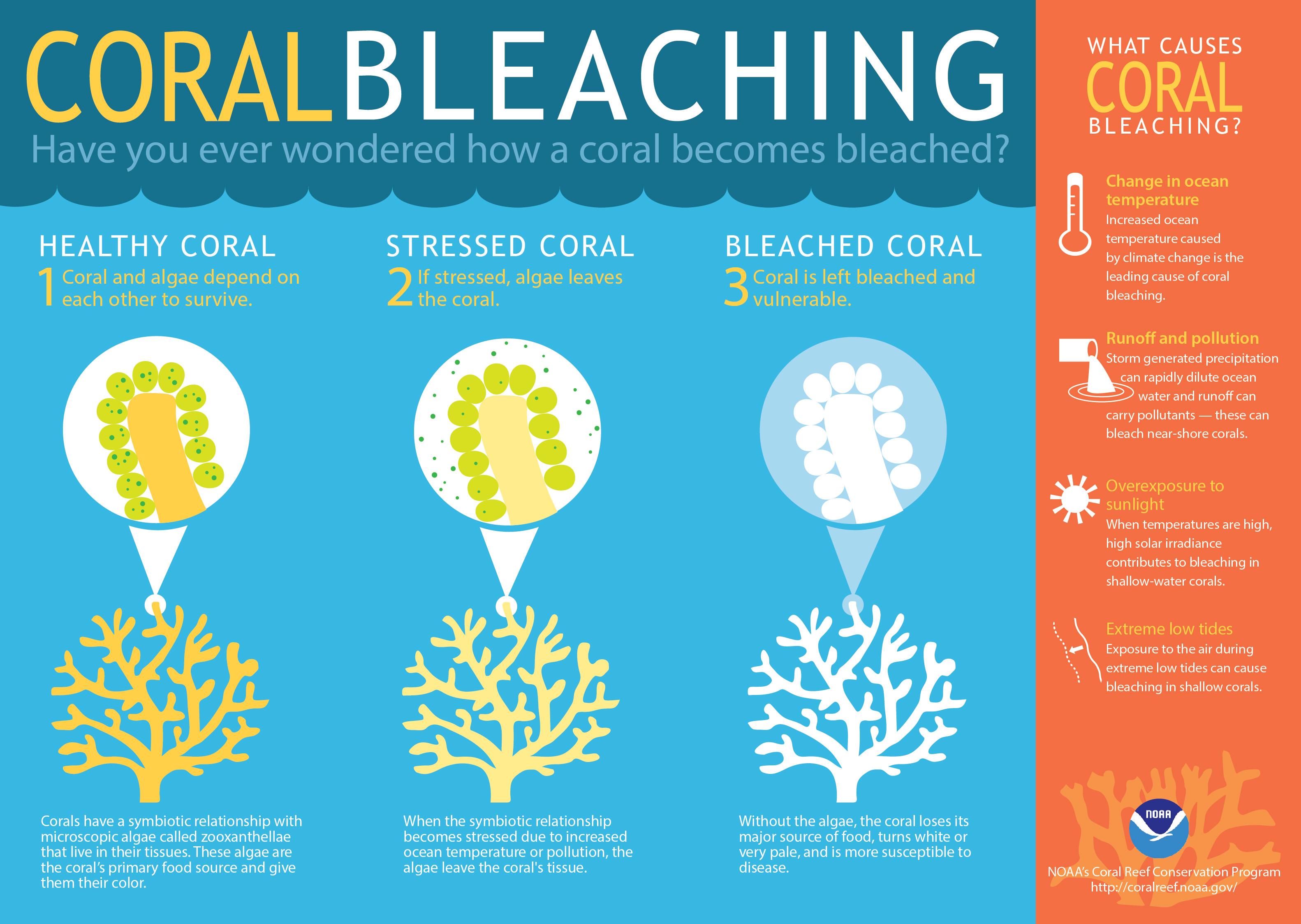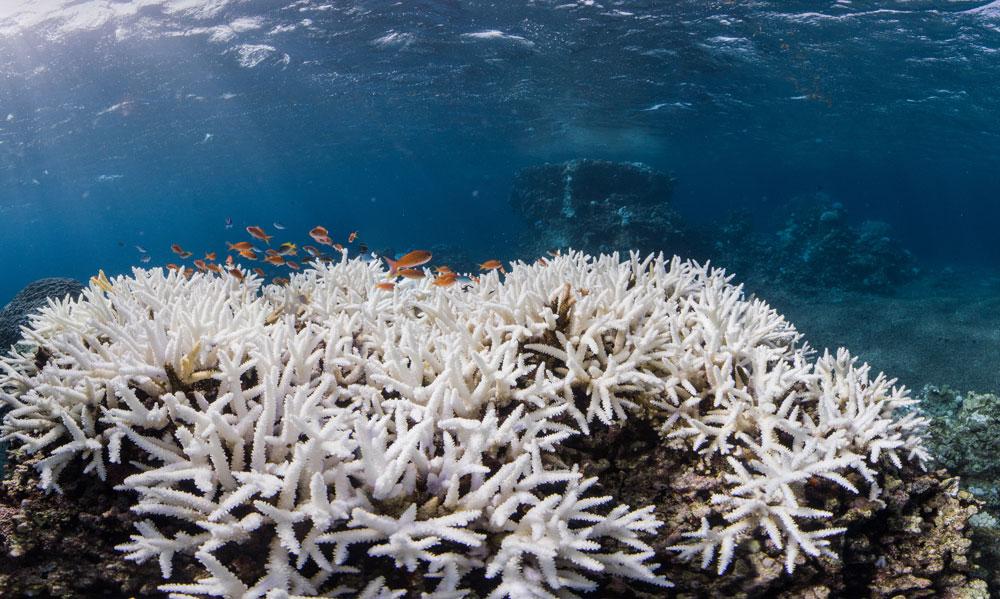Beneath the shimmering surface of our oceans lies a world teeming with life, a vibrant tapestry of colors and shapes that captivates the imagination. Among the most extraordinary architects of this underwater realm are coral reefs, often referred to as the “rainforests of the sea.” These delicate ecosystems, home to countless species, serve as vital hubs for marine biodiversity. However, a growing phenomenon threatens their survival—coral bleaching. Triggered by rising sea temperatures, pollutants, and climate change, this alarming process strips corals of their vibrant hues, leaving behind ghostly white skeletons. Yet, the repercussions of this transformation extend far beyond the reefs themselves. As we delve into the complex web of interconnectedness within the marine ecosystem, we’ll explore the ripple effects of coral bleaching, examining its impact on marine life, coastal communities, and the global environment at large. Join us as we journey “Under the Sea” to uncover the hidden consequences of this urgent crisis and consider what it means for the future of our oceans.
Table of Contents
- Understanding Coral Bleaching and Its Causes
- The Ecological Impact: Ripple Effects on Marine Life
- Community Consequences: Economic and Social Ramifications
- Restoration Strategies: Pathways to Revitalize Coral Reefs
- Wrapping Up
Understanding Coral Bleaching and Its Causes

Coral reefs, vibrant underwater ecosystems, rely on a delicate balance between various organisms, particularly the symbiotic relationship between corals and zooxanthellae—tiny algae that live within coral tissues. When environmental conditions shift, this balance is disrupted, leading to a phenomenon known as coral bleaching. Factors such as increased sea temperatures, ocean acidification, and pollution play a crucial role in stressing coral systems. When corals expel their colorful algae, the once-thriving reefs turn white and lose their primary source of food, effectively putting their survival at risk.
The causes of coral bleaching are multifaceted, representing both natural and human-induced challenges. Some of the most significant contributors include:
- Climate Change: Temperature increases beyond the corals’ tolerance levels.
- Ocean Acidification: Resulting from excess CO2 absorption, this alters seawater chemistry.
- Pollution: Runoff from agricultural and urban areas introduces harmful chemicals.
- Overfishing: Disrupts the ecological balance and reduces resilience against stressors.
Understanding these root causes is vital for conservation efforts, as it informs strategies aimed at mitigating the impacts of bleaching. Below is a concise overview of how these factors interact:
| Factor | Impact on Coral |
|---|---|
| Increased Sea Temperature | Causes stress and algae expulsion. |
| Ocean Acidification | Weakens coral skeletons and growth. |
| Pollution | Introduces toxins and promotes disease. |
| Overfishing | Reduces biodiversity and ecosystem stability. |
The Ecological Impact: Ripple Effects on Marine Life

The devastating phenomenon of coral bleaching initiates a chain reaction that profoundly affects marine ecosystems. As coral bleaches, it loses the vibrant colors that signify a healthy symbiosis with algae, leading to weakened coral structures. This decline in coral health results in:
- Habitat Loss: Countless marine species depend on coral reefs for shelter and breeding grounds.
- Food Chain Disruption: The loss of corals affects the myriad of organisms that feed on or around them, leading to reduced fish populations.
- Diversity Decline: Coral reefs are hotspots of biodiversity; their degradation threatens numerous marine species with extinction.
Not only do the immediate effects of coral bleaching resonate through local ecosystems, but they also contribute to broader environmental changes. The disturbance in marine life leads to:
- Altered Predation Patterns: As primary prey species dwindle, predators face food scarcity, leading to population declines.
- Economic Consequences: Communities reliant on fishing and tourism suffer, exacerbating issues of poverty and economic instability.
- Climate Regulation Disruption: Healthy coral reefs play a role in carbon sequestration; their degradation can heighten atmospheric carbon levels.
Community Consequences: Economic and Social Ramifications
The effects of coral bleaching extend far beyond the underwater ecosystems; they resonate throughout coastal communities, weaving a complex tapestry of economic challenges and social change. As coral reefs—often dubbed the “rainforests of the sea”—begin to fade, local economies that rely heavily on fishing and tourism face dire consequences. Coral reefs act as nurseries for a myriad of fish species, and their decline can lead to diminished fish populations, directly impacting the livelihoods of fishermen. Tourism, too, suffers as snorkeling and scuba diving enthusiasts flock to destinations known for their vibrant marine life, often circumventing areas where corals have bleached. This loss can result in a downturn in local businesses, from eco-tourism agencies to restaurants and hotels that thrive on these natural attractions.
On the social front, the implications of coral degradation can trigger shifts in community dynamics. As fishing stocks diminish and tourism wane, communities may experience an increase in unemployment, leading to economic hardship and social unrest. Families that once depended on the bounty of the sea find themselves grappling with food insecurity and poverty. Furthermore, the loss of coral reefs can erode cultural connections to the sea, which many coastal communities hold dear. This might lead to frustration and anxiety, as younger generations witness the degradation of their heritage and are faced with stark choices: adapt or leave. Ultimately, the ripple effects of coral bleaching highlight the intricate relationship between healthy marine ecosystems and the social fabric that binds coastal communities together.
Restoration Strategies: Pathways to Revitalize Coral Reefs
The challenge of revitalizing coral reefs necessitates a multifaceted approach, embracing both scientific innovation and community engagement. One promising avenue involves the restoration of coral through microfragmentation and coral gardening. This method allows for the accelerated growth of corals by breaking larger fragments into smaller pieces, thus encouraging rapid adhesion to the substrate and bolstering genetic diversity. Additionally, the practice of replanting nursery-grown corals on damaged reefs fosters a sense of stewardship among local communities, empowering them to protect these vital ecosystems. Key strategies include:
- Coral Nurseries: Establishing floating nurseries to grow and propagate resilient coral species.
- Assisted Gene Flow: Introducing heat-tolerant coral species to enhance overall reef resilience.
- Marine Protected Areas: Implementing zones that restrict harmful activities to allow ecosystems to recover naturally.
Evaluating the effectiveness of these restoration strategies can be facilitated by systematic monitoring. Engaging researchers, local fishermen, and dive operators, we can harness traditional ecological knowledge alongside scientific methodologies. Utilizing data visualization tools can effectively communicate outcomes to stakeholders. Furthermore, a collaborative framework can ensure ongoing investment in these initiatives. Below is a summary of key restoration challenges and solutions:
| Challenge | Solution |
|---|---|
| Coral Bleaching | Implement shading techniques to reduce temperature exposure during heat events. |
| Pollution | Strengthen regulations on coastal development and waste management. |
| Overfishing | Create sustainable fishing practices and restore fish populations. |
Wrapping Up
As we resurface from the depths of our exploration into the intricate world of coral bleaching, it becomes evident that the implications of this phenomenon stretch far beyond the vibrant reefs themselves. The stories of those irreplaceable ecosystems—once a thriving kaleidoscope of life—echo the urgent narrative of our planet’s health. While coral reefs may seem distant to many, the ripple effects of their decline affect every corner of the globe, from local fishing communities to global weather patterns.
In this interconnected web of life, where the ocean’s pulse can dictate our very own, we are reminded of our responsibility as stewards of the Earth. The future of coral reefs rests not solely on the scientific breakthroughs and conservation efforts of today, but also on our collective commitment to addressing climate change, pollution, and habitat destruction. As we draw this exploration to a close, let us carry with us not just a richer understanding of the underwater world, but a renewed determination to protect it. The fate of coral reefs is intertwined with our own; together, we can ensure that future generations can continue to marvel at the wonders “under the sea.”



